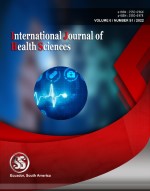Comparative study between high dose versus low dose oxytocin for augmentation of labor in relation to maternal and fetal outcome
Keywords:
Apgar score, Chorioamnionitis, Dilatation, Dystocia, Induced labor, Oxytocin, Uterine ruptureAbstract
Background: The use of oxytocin is common for shortening labor to reduce maternal and fetal morbidity. However, the use of various dosage forms for labor induction is limited. Therefore, the present study aimed to evaluate the efficacy and safety of high vs low dose oxytocin for labor augmentation and its impact on maternal and neonatal outcome. Materials and Method: This randomized, controlled study included100 subjects who were randomly assigned to Groups I (low dose oxytocin) and II (high dose oxytocin) with 50 subjects each. Maternal parameters like mode of delivery, labor duration, tachysystole, post-partum hemorrhage, uterine atony, uterine rupture, chorioamnionitis, and maternal mortality were assessed. Fetal parameters such as Apgar score and duration of NICU admission were assessed. Data was analyzed using Chi-square test. P value of <0.05 was regarded statistically significant. Results: Significant differences were observed among two groups with respect to age and weight (p=0.027 and p=0.001). Duration of labor showed a significant difference for augmentation to full dilatation interval (AFD) and augmentation to delivery (AD) (p<0.001) between two groups.
Downloads
References
Wei SQ, Luo ZC, Qi HP, Xu H, Fraser WD. High-dose vs low-dose oxytocin for labor augmentation. A systematic review. Am J Obstet Gynecol 2010;203(4):296-204.
Kallen K, Rydstr€om H, Otterblad Olausson P. Kejsarsnitt I Sverige 1990–2001 [Cesarean section in Sweden 1990–2001] (in Swedish.). Stockholm: Centre for Epidemiology - The National Board of Health and Welfare, 2005.
Neal JL, Lowe NK, Ahijevych KL, Patrick TE, Cabbage LA, Corwin EJ. Active labor duration and dilation rates among low-risk, nulliparous women with spontaneous labor onset: a systematic review. J Midwifery Womens Health 2010;55(4):308–318.
Karaçam Z, Walsh D, Bugg GJ. Evolving understanding and treatment of labour dystocia. Eur J Obstet Gynecol 2014;182:123–127.
Sandström A. Labour dystocia: risk factors and consequences for mother and infant [Diss.]. Stockholm: Karolinska Institutet; 2016.
National Collaborating Centre for Women’s and Children’s Health (UK. “Intrapartum care: Care of healthy women and their babies during childbirth.” 2014.
Zhang J, Branch DW, Ramírez MM, Laughon SK, Reddy U, Hoffman M, et al. Oxytocin regimen for labor augmentation, labor progression, and perinatal outcomes. Obstet Gynecol. 2011;118(2 pt 1):249-256.
Clark SL, Simpson KR, Knox GE, Garite TJ. Oxytocin: New perspectives on an old drug. Am J Obstet Ginecol. 2009;200(1):35-36.
American College of Obstetricians and Gynecologists (2009) Induction of labor. ACOG practice bulletin #107. Obstet Gynecol 2009;114:386–397.
Ghidini A, Wohlleb D, Korker V, Pezzullo JC, Poggi SH. Effects of two different protocols of oxytocin infusion for labor induction on obstetric outcomes: A cohort study. Open Journal of Obstetrics and Gynecology, 2012;2(2):106-111.
Budden A, Chen LJY, Henry A. High-dose versus low-dose oxytocin infusion regimens for induction of labour at term. Cochrane Database of Systematic Reviews 2014;10: Art.No.:CD009701.
Kenyon S, Tokumasu H, Dowswell T, Pledge D, Mori R. High-dose versus low-dose oxytocin for augmentation of delayed labour. Cochrane Database Syst Rev 2013;7: Cd007201.
Neerukonda M, More S, Himabindu N. High dose versus low dose oxytocin for augmentation of labor: A prospective, comparative, randomized study. Int J Med Res Health Sci 2018;7(4):6-10.
Tesemma MG, Sori DA, Gemeda DH. High dose and low dose oxytocin regimens as determinants of successful labor induction: a multicenter comparative study. BMC Pregnancy and Childbirth 2020;20:232.
Merrill Dc, Elatnic FI. Randomized, double marked comparison of oxytocin dosage in induction and augmentation of labor. Obstet Gynecol 1999;94(3):455-463.
Published
How to Cite
Issue
Section
Copyright (c) 2022 International journal of health sciences

This work is licensed under a Creative Commons Attribution-NonCommercial-NoDerivatives 4.0 International License.
Articles published in the International Journal of Health Sciences (IJHS) are available under Creative Commons Attribution Non-Commercial No Derivatives Licence (CC BY-NC-ND 4.0). Authors retain copyright in their work and grant IJHS right of first publication under CC BY-NC-ND 4.0. Users have the right to read, download, copy, distribute, print, search, or link to the full texts of articles in this journal, and to use them for any other lawful purpose.
Articles published in IJHS can be copied, communicated and shared in their published form for non-commercial purposes provided full attribution is given to the author and the journal. Authors are able to enter into separate, additional contractual arrangements for the non-exclusive distribution of the journal's published version of the work (e.g., post it to an institutional repository or publish it in a book), with an acknowledgment of its initial publication in this journal.
This copyright notice applies to articles published in IJHS volumes 4 onwards. Please read about the copyright notices for previous volumes under Journal History.
















